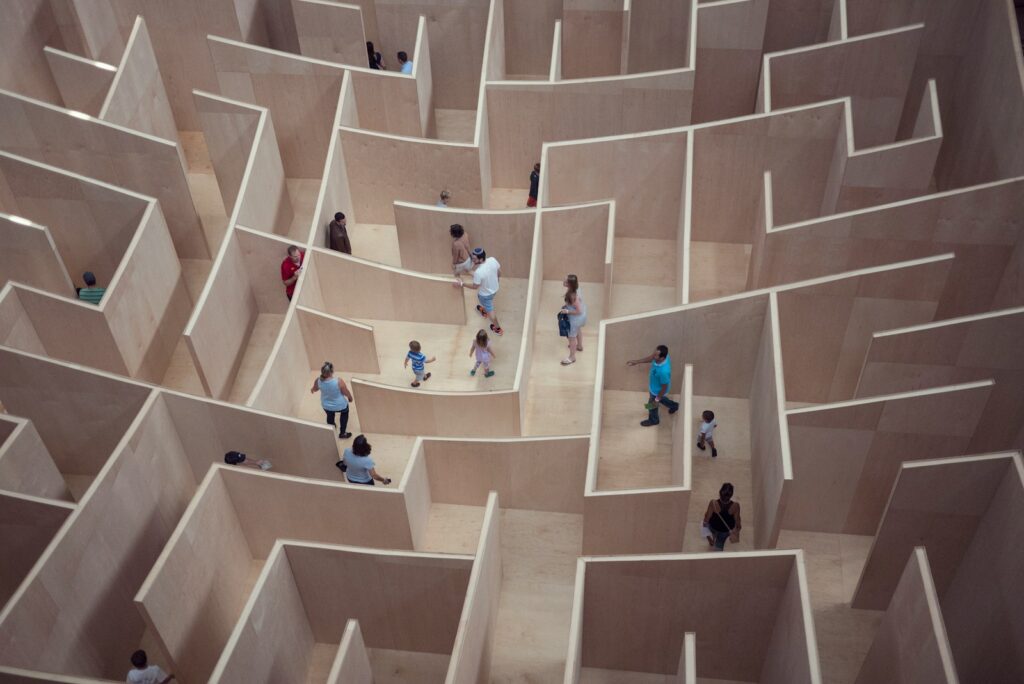Blockly Games: If you’ve ever tried learning to code and found it daunting, you’re not alone. The syntax, logic, and endless debugging can feel like hitting a brick wall. But what if coding could be as engaging and intuitive as playing a game? Enter Blockly Games—a delightful fusion of coding and gaming that makes learning to code a thrilling adventure.
What are Blockly Games?
Blockly Games are a series of educational games designed to teach programming concepts using a visual block-based coding system. Instead of typing out code, players use drag-and-drop blocks that fit together like puzzle pieces, making it easier to grasp the logic and structure of coding.
Why Blockly Games?
Engaging Learning Experience
Learning through play is a powerful educational strategy. Blockly Games capitalizes on this by turning coding lessons into interactive and engaging challenges.
Visual Learning
For many, visual learning is more effective than text-based instruction. Blockly’s visual blocks help learners see the connections between different coding concepts.
Immediate Feedback
Games provide immediate feedback, which is crucial for learning. When you place a block incorrectly, you see the error right away, allowing you to learn and adjust on the fly.
The Evolution of Blockly Games

The Origins
Blockly itself is an open-source project developed by Google aimed at making coding more accessible. Blockly Games took this mission further, packaging Blockly into fun and educational games.
Growing Popularity
Since their inception, Blockly Games have become a staple in coding education, used by schools and individuals worldwide to introduce programming in a friendly, engaging way.
Exploring the Different Blockly Games
1. Maze

The Maze game is often the first stop for Blockly beginners. It introduces basic programming concepts like loops and conditionals as players guide a character through increasingly complex mazes.
2. Bird
In the Bird game, players write code to navigate a bird to its target. This game builds on the concepts learned in Maze, adding more complexity and depth.
3. Turtle
The turtle is where things get artistic. Players control a turtle to draw shapes and patterns, learning about loops and functions in the process.
4. Movie
The Movie Game takes creativity to the next level, allowing players to create animations. This introduces more advanced concepts like variables and mathematics in programming.
5. Pond

Pond offers two variations: Pond Tutor and Pond JS. In Pond Tutor, players use Blockly to solve puzzles. Pond JS ramps up the difficulty by introducing JavaScript, providing a bridge to text-based coding.
How Blocky Games Make Learning Fun
Gamification Elements
Gamification is the secret sauce. Each game features levels, challenges, and rewards, making the learning process exciting and motivating.
Interactive Challenges
Rather than passively absorbing information, learners actively engage with coding problems, which reinforces learning through practice.
Progressive Difficulty
The games start simple and gradually increase in difficulty, ensuring that learners are never overwhelmed but are continuously challenged.
The Educational Benefits of Blockly Games
Develops problem-solving skills
Blockly games are excellent for developing problem-solving skills. Each level presents a new challenge that requires critical thinking and creativity.
Encourages logical thinking
Coding is all about logic, and Blockly’s visual approach makes it easier to understand how different parts of a program work together logically.
Builds Perseverance
Learning to code requires patience and persistence. Blockly games help build these qualities by encouraging learners to keep trying until they succeed.
Blockly Games in the Classroom
Teacher-Friendly Tools
Blockly Games come with a host of resources for educators, including lesson plans and progress tracking tools, making them easy to integrate into the classroom.
Collaborative Learning
The games can be used for group activities, promoting collaboration and communication among students.
Aligns with curriculum standards
Blockly Games align with many educational standards for computer science, ensuring that students are learning relevant and valuable skills.
Parents and Blockly Games
Coding at Home
Blockly games are perfect for at-home learning. Parents don’t need to be coding experts; the games are designed to be intuitive and self-guided.
Encourages Screen Time for Good
Instead of endless hours of passive screen time, Blockly Games offers a productive and educational alternative.
Tips for Getting the Most Out of Blockly Games
Start Simple
Begin with the basics. Even if you or your child have some coding experience, starting with the simpler games helps build a solid foundation.
Be Patient
Learning to code takes time. Encourage taking breaks and coming back to tough problems with a fresh perspective.
Explore Together
If you’re a parent or teacher, try playing the games with your child or students. It’s a great way to learn together and provide support.
Blockly Games vs. Traditional Coding Education
Accessibility
Traditional coding can be intimidating for beginners. Blockly games lower the barrier to entry by simplifying the learning process.
Engagement
While textbooks and lectures have their place, they can’t match the engagement level of a game. Blockly games make learning active and enjoyable.
Foundation for Future Learning
Blockly games provide a strong foundation in programming concepts, making it easier to transition to more advanced coding later on.
Success Stories: How Blockly Games Have Impacted Learners
Student Transformations
Many students who were initially uninterested in coding found their passion through Blockly Games, eventually pursuing further education and careers in technology.
Teacher Testimonials
Educators have reported improved student engagement and understanding of coding concepts after integrating Blockly Games into their curriculum.
The Future of Blockly Games
Continued Development
The developers behind Blockly are continually updating and expanding the games, ensuring they remain relevant and challenging.
Expanding Reach
As more schools and families discover Blockly Games, their impact on coding education continues to grow.
In Conclusion, Blockly Games represent a revolutionary approach to learning coding, combining the best elements of play and education. Whether you’re a student, teacher, or parent, these games offer an accessible, engaging, and effective way to dive into the world of programming. So why not give it a try? You might just find that coding can be as fun as it is powerful.
FAQs About Blockly Games
Q1: Are block games suitable for all ages?
Yes, Blockly Games are designed to be accessible for a wide range of ages, from young children to adults.
Q2: Do you need any prior coding knowledge to play Blockly Games?
No prior coding knowledge is required. The games start with basic concepts and gradually introduce more complexity.
Q3: Are Blockly Games free to use?
Yes, Blockly Games are completely free and can be accessed online without any cost.
Q4: Can Blockly Games be used on tablets and smartphones?
Blockly Games are designed to be compatible with most modern web browsers, making them accessible on tablets and smartphones as well as computers.
Q5: How do Blockly Games help in learning real programming languages?
Blockly Games teach fundamental programming concepts that are applicable to many real-world programming languages, making the transition to text-based coding smoother.


